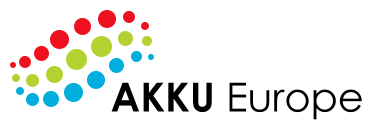
General information
| |||||||||||||||||||||
| Kind of tool: | Checklist | ||||||||||||||||||||
| Target group: | Executives, owners and managing directors and employees | ||||||||||||||||||||
| Duration in minutes: | 90 minutes | ||||||||||||||||||||
| Description of the tool: | Continuous training is important to keep employees and managers up to date and to develop skills. Especially in seminars and workshops, it is necessary to prepare the seminar visit well and to transfer and apply what you have learned to everyday work. The entire company or certain departments and their employees can benefit if one of the employees learns something new. | ||||||||||||||||||||
| Benefit of the tool: | By using the available tool, employees are supported in implementing what they have learned in further training measures on the job. Through appreciation and support in the implementation of what they have learned, employees are motivated to derive the greatest possible benefit from further training measures. The instrument helps to: - Choosing the right training - To have a structured preparatory discussion with the employees about the objectives and contents of the training - Define the framework conditions concretely (costs, communication, disruptions, etc.) to have a feedback talk after completing the course (what was learned, how was the knowledge imparted, criticism, etc.) | ||||||||||||||||||||
| Duration: | 90 minutes | ||||||||||||||||||||
| How to use the tool: | The tool: "Ensuring learning success" is used before and after in-company further training measures (e.g., external seminar, internal training, individual coaching, on-the-job training, etc.). The tool consists of 4 checklists: - Checklist 1: Selection of a further training measure - Checklist 2: Preparatory interview for participation in a further training measure - Checklist 3: Return interview after participation in a further training measure - Checklist 4: Action plan The instrument helps to: - to choose the right training - to have a structured preparatory discussion with the employees about the objectives and contents of the training course - to define the framework conditions concretely (costs, communication, disruptions, etc.) to have feedback after completing the course (what was learned, how was learned, criticism, etc.) | ||||||||||||||||||||
| Floor and Area: |
| ||||||||||||||||||||
| Source: | D-IALOGO | ||||||||||||||||||||
 The European Commission's support for the production of this publication does not constitute an endorsement of the contents, which reflect the views only of the authors, and the Commission cannot be held responsible for any use which may be made of the information contained therein  The materials published on the AKKU project website are classified as Open Educational Resources' (OER) and can be freely (without permission of their creators): downloaded, used, reused, copied, adapted, and shared by users, with information about the source of their origin. | |||||||||||||||||||||